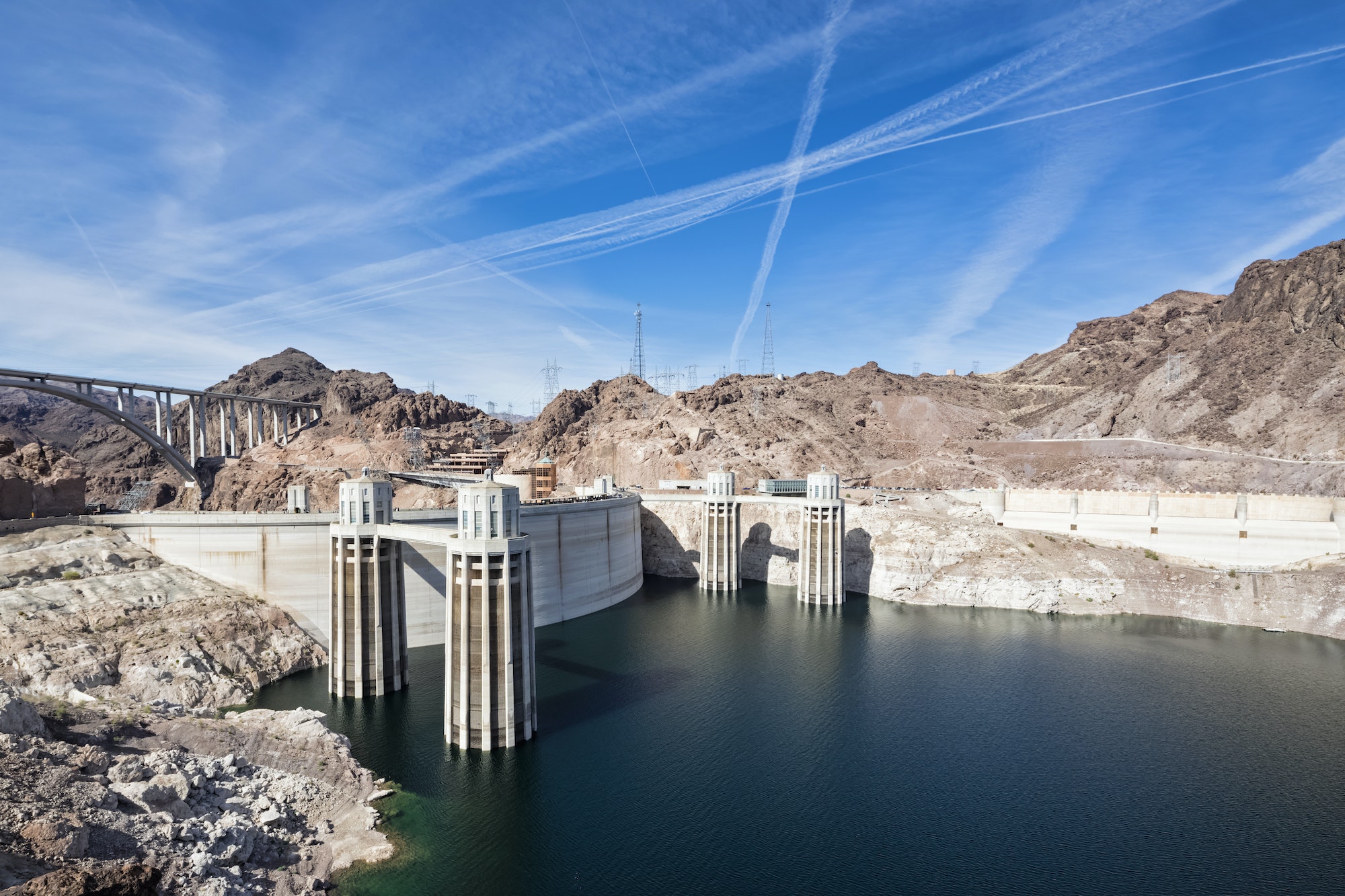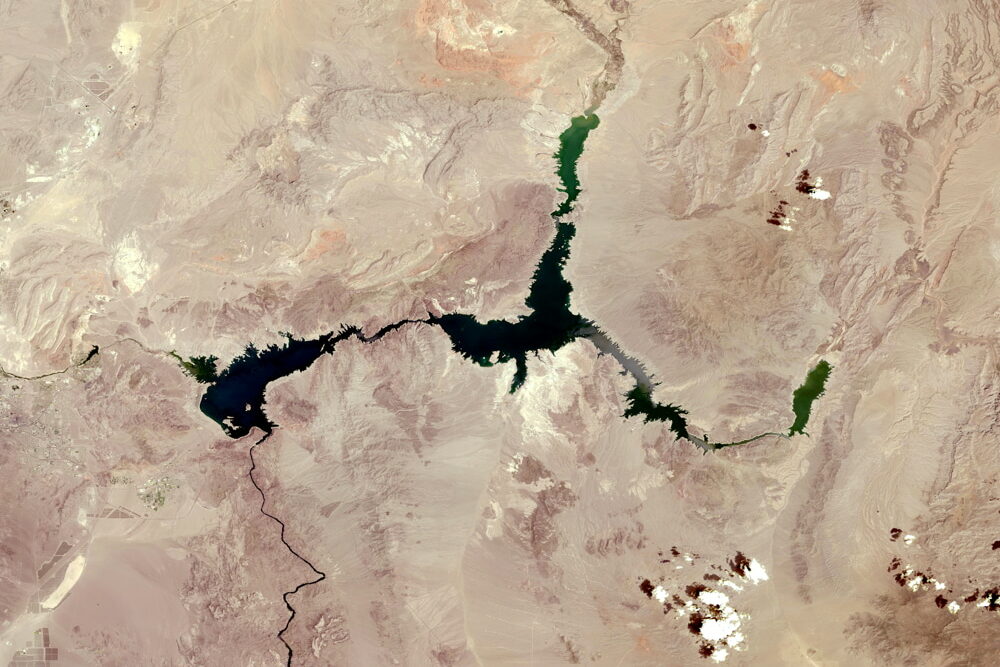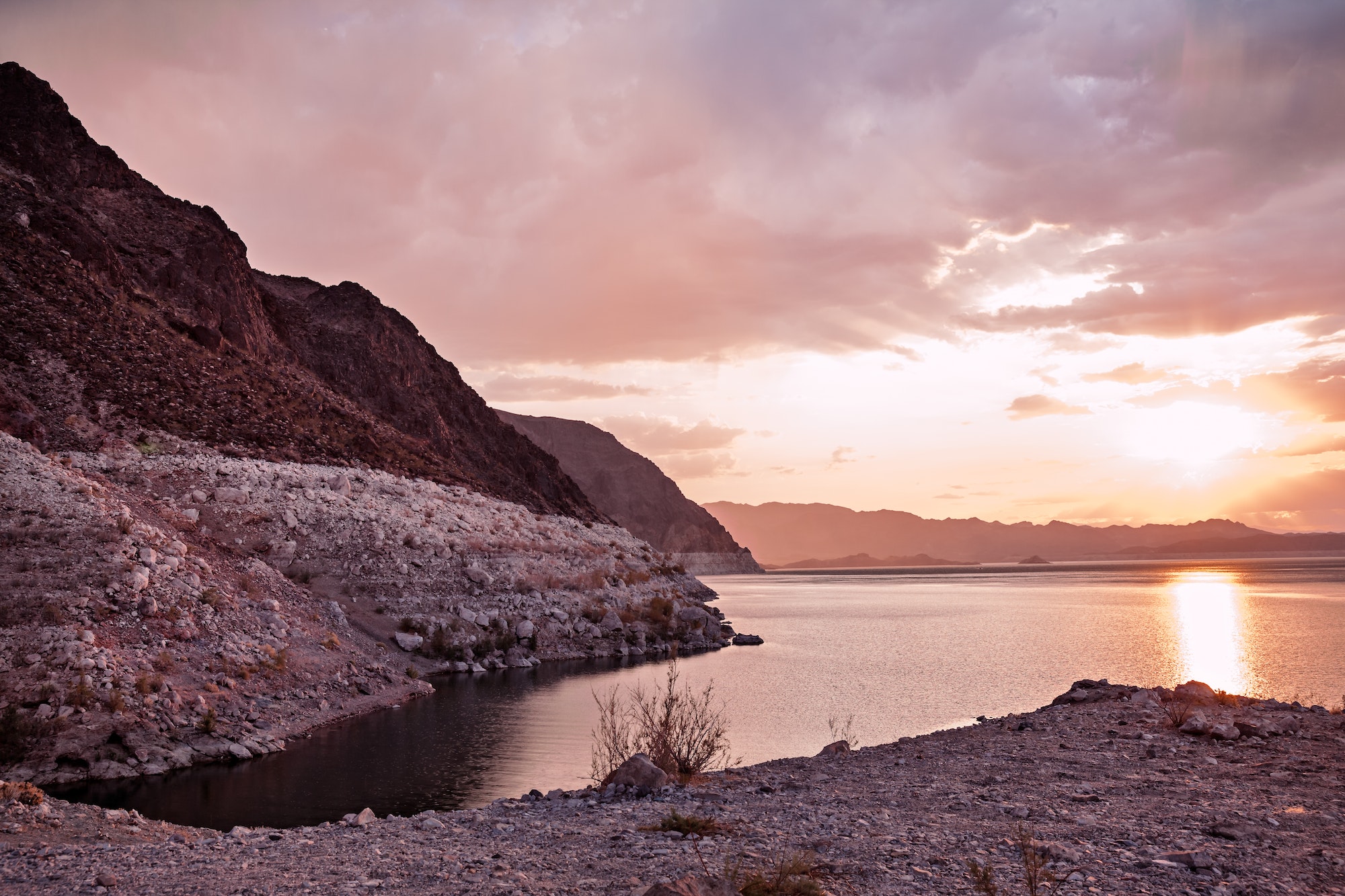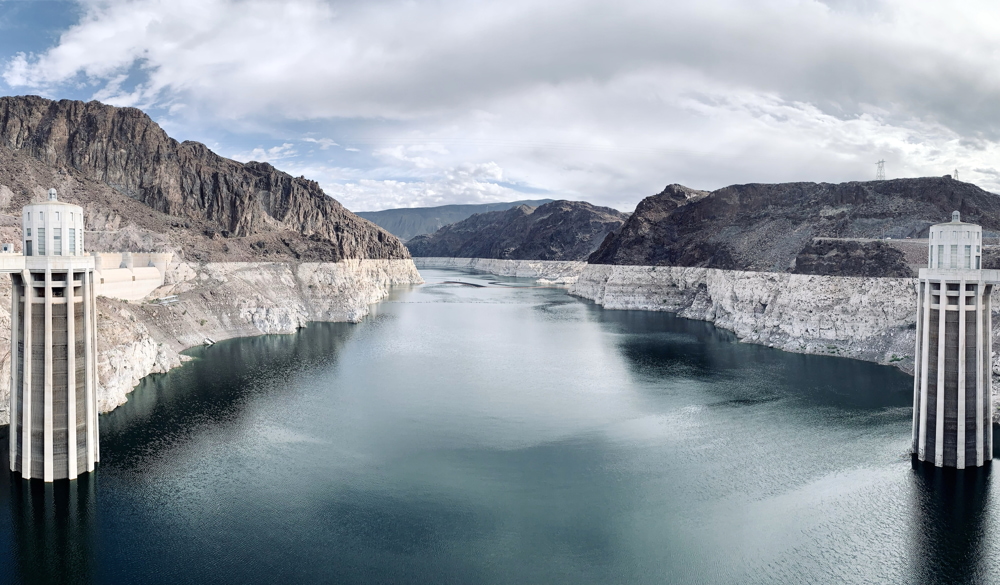Lake Mead is a man-made reservoir located in the southwestern United States, formed when the Hoover Dam was built on the Colorado River. The lake is situated in Arizona and Nevada and is a popular destination for recreational activities such as fishing, boating, and swimming. One of the fascinating aspects of Lake Mead is its depth, which has been a topic of interest for many years.
So, just how deep is Lake Mead? The lake reaches approximately 532 feet (162 meters) at its maximum depth. This depth can be found near the Hoover Dam, where the massive concrete structure holds back the water. However, the lake’s average depth is around 230 feet (70 meters), making it one of the deepest man-made lakes in the United States.
Lake Mead’s depth is fascinating and significant in terms of its impact on the surrounding environment. The lake serves as a crucial water source for the southwestern United States, providing millions of people with agricultural irrigation and drinking water. However, the lake’s water levels have declined in recent years due to drought and overuse, posing significant challenges to the region’s water supply and ecosystem.
Depth of Lake Mead
Lake Mead’s depth varies depending on the location within the reservoir. The table below shows the different depths of specific locations within Lake Mead. Boulder Basin has the deepest depth at 575 feet, while Vegas Bay has the shallowest depth at 100 feet. The table also includes the corresponding areas of each location, which range from 10 to 60 square miles. It’s important to note that these depths and areas may fluctuate due to factors such as water levels and hydroelectric power generation.
| Location | Depth (feet) | Area (square miles) |
| Boulder Basin | 575 | 90 |
| Virgin Basin | 470 | 60 |
| Temple Basin | 500 | 20 |
| Gregg Basin | 375 | 10 |
| Overton Arm | 300 | 20 |
| Vegas Bay | 100 | 10 |
| Government Wash | 200 | 20 |
The Formation of Lake Mead
Lake Mead is a man-made reservoir created by the Hoover Dam’s construction on the Colorado River. The dam’s construction began in 1931 and was completed in 1936, resulting in the formation of Lake Mead. The project was a massive undertaking that required the efforts of thousands of workers and engineers, and it remains one of the most significant engineering feats in American history.
Lake Mead’s formation resulted from a long-term plan to control the flow of the Colorado River, which had caused numerous devastating floods in the southwestern United States. The Hoover Dam was designed to provide flood control, irrigation, and hydroelectric power to the region while creating a reliable water source for urban and agricultural use.
The dam’s construction involved diverting the Colorado River and building a massive concrete structure to hold back the water and create a reservoir. The dam was designed to be 726 feet (221 meters) tall and 1,244 feet (379 meters) long, making it one of the largest concrete structures in the world at the time.
For several years, workers excavated millions of cubic yards of rock and soil to create the foundation for the dam and then poured millions of cubic yards of concrete into building the structure itself. The project was incredibly challenging, with workers facing extreme heat, dangerous conditions, and tight schedules.
Despite these challenges, the Hoover Dam was completed on time and under budget, resulting in Lake Mead’s formation and significant benefits to the region. Today, Lake Mead remains a vital source of water and a popular destination for recreational activities, serving as a testament to the ingenuity and determination of the engineers and workers who built it.

Geography of Lake Mead
Lake Mead is a large reservoir located on the Colorado River, straddling the border between the states of Nevada and Arizona in the western United States. The lake is situated within the Mojave Desert and covers an area of approximately 247 square miles (640 square kilometers). Here are some of the key geographic features of Lake Mead:
• Surrounding Landscapes – The surrounding landscape of Lake Mead is characterized by rugged desert terrain, towering rock formations, and dramatic canyons. The area is home to many unique and diverse plant and animal species that have adapted to the harsh desert environment.
• Water Sources – The water in Lake Mead comes primarily from the Colorado River, which flows into the lake from the north. Other smaller rivers and streams also contribute water to the lake, but the Colorado River is the primary source of water.
• Water Levels – The water levels in Lake Mead are closely monitored due to the region’s arid climate and limited water resources. The lake’s water levels can fluctuate significantly depending on factors such as drought, snowmelt, and water usage.
• Hydroelectric Power – The Hoover Dam, located on the Colorado River near Lake Mead, generates hydroelectric power that serves much of the southwestern United States. The dam is a remarkable engineering feat and remains one of the most significant landmarks in the United States.
• Climate – The climate around Lake Mead is hot and dry, with long, hot summers and mild winters. Temperatures during the summer months regularly exceed 100 degrees Fahrenheit (38 degrees Celsius), while winter temperatures are generally mild.
• Ecosystem – The ecosystem around Lake Mead is home to a wide variety of animal and plant species, many of which are adapted to the desert environment. The lake and surrounding areas are popular destinations for outdoor activities such as hiking, camping, and fishing.

Interesting facts about Lake Mead
Lake Mead is a fascinating destination that offers visitors a unique blend of natural beauty and engineering marvels. Here are some interesting facts about Lake Mead that you may not know:
• Largest Reservoir in the United States – Lake Mead is the largest reservoir in the United States, with a maximum storage capacity of 26.12 million acre-feet (32.2 billion cubic meters) of water.
• Man-made Wonder – Lake Mead is a man-made reservoir that was created by the construction of the Hoover Dam on the Colorado River. The dam is a remarkable feat of engineering and remains one of the most significant landmarks in the United States.
• Recreational Activities – Lake Mead is a popular destination for outdoor activities such as fishing, boating, swimming, and hiking. The lake is home to a wide variety of fish species, including striped bass, largemouth bass, and rainbow trout.
• Hot and Dry Climate – The climate around Lake Mead is hot and dry, with temperatures regularly reaching over 100 degrees Fahrenheit (38 degrees Celsius) during the summer months. Visitors should be prepared for the intense heat and bring plenty of water and sunscreen.
• Unique Landscapes – The surrounding landscape of Lake Mead is unique and diverse, ranging from rugged desert terrain to soaring rock formations. Visitors can explore the many scenic areas around the lake, including the Black Canyon and the Valley of Fire State Park.
• Declining Water Levels – Lake Mead has been experiencing a decline in water levels in recent years due to drought and overuse. This poses significant challenges for the region’s water supply and ecosystem, highlighting the importance of water conservation and management.
• Historic Sites – Lake Mead is home to several historic sites, including the Hoover Dam, which offers tours and exhibits about the dam’s construction and history. Other historic sites include the Boulder Dam Hotel and the Lost City Museum.

Recreational Activities at Lake Mead
Lake Mead offers visitors a wide range of recreational activities that are perfect for outdoor enthusiasts and nature lovers. Here are some of the top recreational activities that you can enjoy at Lake Mead:
• Boating – Lake Mead is a popular destination for boating, with numerous marinas and boat ramps available for launching boats of all sizes. Visitors can explore the lake’s vast expanse of water and enjoy the beautiful scenery from the comfort of their own vessel.
• Fishing – Lake Mead is home to a wide range of fish species, including striped bass, largemouth bass, and rainbow trout. Fishing is a popular activity at the lake, and visitors can try their luck at catching some of the lake’s many fish species.
• Swimming – Lake Mead is a great place to go swimming, with many designated swim areas available for visitors. The lake’s clear and refreshing waters are perfect for cooling off on a hot summer day.
• Hiking – The surrounding area of Lake Mead is home to many scenic hiking trails that offer breathtaking views of the lake and surrounding landscapes. Hikers can explore the many trails and enjoy the unique and diverse desert terrain.
• Camping – Lake Mead is an ideal destination for camping, with numerous campgrounds available for visitors. Campers can enjoy the beauty of the lake and surrounding landscapes while sleeping under the stars.
• Wildlife Watching – Lake Mead is home to a wide variety of wildlife, including bighorn sheep, coyotes, and various bird species. Visitors can observe and appreciate the area’s diverse wildlife while exploring the many scenic areas around the lake.
• Water Sports – In addition to boating and swimming, Lake Mead offers visitors many other water sports activities, including water skiing, jet skiing, and paddleboarding. These activities are a great way to enjoy the lake’s beautiful waters and warm sunshine.

The Future of Lake Mead
The future of Lake Mead is uncertain, as the lake continues to face significant challenges related to climate change, water usage, and drought. While conservation efforts are underway to help protect the lake’s water resources and ensure its long-term sustainability, the challenges facing the lake are significant. Rising temperatures and changing precipitation patterns are likely to further reduce the lake’s water levels and increase the risk of water shortages. Overall, the future of Lake Mead will depend on a complex mix of factors, and innovative solutions will be needed to ensure that the lake can continue to serve as a critical water resource for the southwestern United States for generations to come.

FAQ
What is the depth of Lake Mead?
The depth of Lake Mead varies depending on the location within the lake. The deepest point in the lake is approximately 532 feet, while other locations have depths ranging from 100 to 500 feet.
Will Lake Mead run out of water?
There is concern that Lake Mead may eventually run out of water due to a combination of factors such as climate change, drought, and increasing demand for water. The lake has already experienced a significant decrease in water levels over the past few decades, and there are projections that the lake could reach critically low levels in the future.
However, efforts are being made to address these challenges and ensure the sustainability of the lake and its resources. These efforts include water conservation measures, increased use of renewable energy, and investments in new technologies for water management. Additionally, ongoing research and monitoring of the lake’s water levels and ecosystem will help inform future management strategies. While there is no guarantee that Lake Mead will never run out of water, it is hoped that these efforts will help to mitigate the impacts of the current challenges and ensure the long-term viability of the lake.
Why is Lake Mead Important?
Lake Mead is important for a variety of reasons. Firstly, it provides water for millions of people in the Southwest, including the cities of Las Vegas, Phoenix, and Los Angeles. The lake also supports a range of wildlife and fish species, making it an important ecosystem. Additionally, Lake Mead is a popular recreational destination, attracting visitors from around the world to enjoy activities such as boating, fishing, hiking, and camping. Finally, the Hoover Dam, which created the lake, is a significant engineering marvel and tourist attraction, showcasing the ingenuity and capabilities of human construction.

